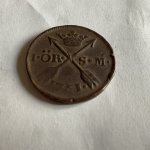ivan salis
Gold Member
- Feb 5, 2007
- 16,794
- 3,809
- 🏆 Honorable Mentions:
- 1
- Detector(s) used
- delta 4000 / ace 250 - used BH and many others too
(1) letter dated Oct 24,1715-- in the letter (dated about 3 months after the july 30, 1715 shipwrecks) it was stated by the english governor of virgina ( spotswood) to secretary (stanhope) "the spanish fleet rich laden, consisting of eleven sail, except for one, are likely cast away in the gulf of florida to the southward of st augustine...(later on in the letter) ...a considerable quantity of plate is likewise cast away about 40 miles to the northward of st. augustine (that would place it at the nassau sound part of amelia island) ...
(2)Sept 20,1715 --salmon wrote to king phillip stating "the 2 galleons are missing the San Miguel and the french prize ,there is little doubt they sank upon the high seas, and this was proven by because fragments of a ship or ships was found on the north coast of st augustine ( **should be read-- coast north of st augustine to matchup) --
(3). Oct 19,1715 Lima wrote to Linares (viceroy of mexico)"from the news we recieved from st augustine we learned that fragments of a large ship came ashore 15 leagues to the leeward of this port,and because of the many reefs outside this portion of the coast ,we fear there are no survivors" (**if leeward was north the 15 leauges would match up)
(4) important note " all the ships were lost except a french nao and three frigates of Echeverz squardon, because by the time the storm struck they had taken another route**(they were farther north than the rest--Haskins) the day before the storm the San Miguel had seperated from the convoy two days before the grifon had seperated and the day of the storm the fragata Concepcion seperated (Haskins--Indiferente General 2648)
I find odd use of the word the word "Galleon" (2) is used not nao ---as "galleon" normally refers to a treasure ship---also worth note is the fact that the admerial Echeverz's son was in charge of this vessel and it was recorded that it carried a large amount of tabacco ---a very high value cargo and was well armed with 22 cannon and 4 swivel guns.
(5) there is a Nov. 1769 map by the british map maker---capt william fuller showing a wreck in nassau sound (the wreck MUST pre date Nov 1769) --the english would have know of the wreck site because of the report to the governor spotswood in 1715.
with these facts in hand I feel quite strongly that the sr. san miguel final resting place is at nassau sound islet area.. how about you?
(2)Sept 20,1715 --salmon wrote to king phillip stating "the 2 galleons are missing the San Miguel and the french prize ,there is little doubt they sank upon the high seas, and this was proven by because fragments of a ship or ships was found on the north coast of st augustine ( **should be read-- coast north of st augustine to matchup) --
(3). Oct 19,1715 Lima wrote to Linares (viceroy of mexico)"from the news we recieved from st augustine we learned that fragments of a large ship came ashore 15 leagues to the leeward of this port,and because of the many reefs outside this portion of the coast ,we fear there are no survivors" (**if leeward was north the 15 leauges would match up)
(4) important note " all the ships were lost except a french nao and three frigates of Echeverz squardon, because by the time the storm struck they had taken another route**(they were farther north than the rest--Haskins) the day before the storm the San Miguel had seperated from the convoy two days before the grifon had seperated and the day of the storm the fragata Concepcion seperated (Haskins--Indiferente General 2648)
I find odd use of the word the word "Galleon" (2) is used not nao ---as "galleon" normally refers to a treasure ship---also worth note is the fact that the admerial Echeverz's son was in charge of this vessel and it was recorded that it carried a large amount of tabacco ---a very high value cargo and was well armed with 22 cannon and 4 swivel guns.
(5) there is a Nov. 1769 map by the british map maker---capt william fuller showing a wreck in nassau sound (the wreck MUST pre date Nov 1769) --the english would have know of the wreck site because of the report to the governor spotswood in 1715.
with these facts in hand I feel quite strongly that the sr. san miguel final resting place is at nassau sound islet area.. how about you?
Amazon Forum Fav 👍
Upvote
0





